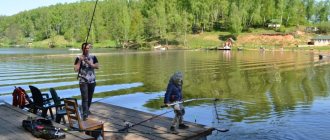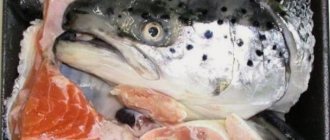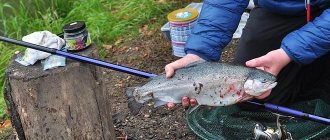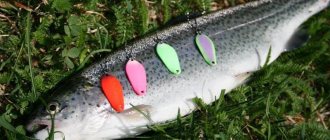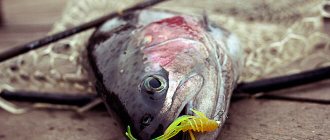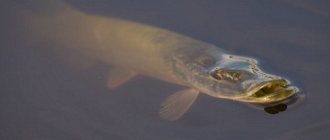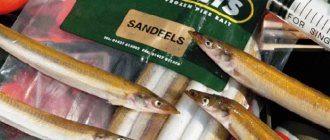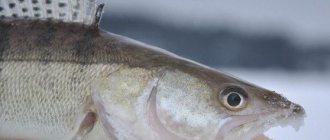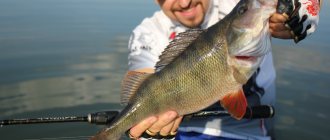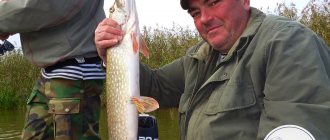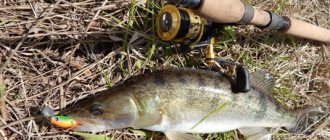Fishing for trout with a spinning rod, which was once an exotic type of fishing, has now become an ordinary and widespread hobby for spinning lovers. This direction is especially highly developed in large cities, where a large number of artificial paid ponds have appeared, populated by this graceful and beautiful fish. In such places, even a novice spinning angler has the opportunity to be guaranteed to catch trout, having only the desire and the necessary equipment for fishing.
For hunting in natural conditions, an experienced fisherman has to carefully look for places where the population of this fish is still in sufficient quantity, and the ecological component of the reservoir does not interfere with ensuring the full existence and reproduction of this species of salmon. Such places untouched by civilization are moving further and further to the east and north of our country, making fishing trips real long trips.
In this article we will discuss the features of trout fishing in its natural habitat and in artificial ponds, give directions for choosing the optimal equipment and bait for fishing, and also consider some technical techniques for retrieving and retrieving caught trophies.
Where to fish for trout
Under natural conditions, river trout fishing is organized on fast, cold streams with depths of no more than 1-1.5 meters. As a rule, the bottom bases of rivers suitable for fish habitat are hard rocky or pebble areas of different levels. Riffles, rapids, and rapids of a stream with areas of relatively calm water are always feeding grounds for this type of salmon fish. Under natural conditions, individuals rarely stay in places with aquatic vegetation, preferring open areas of water areas, where it is better for them to navigate, looking for food in the form of insects that have fallen into the water stream and small helpless fish drawn into the rapid current of the river.
Fishing for trout on a platform is radically different from the conditions of the natural environment. Artificial ponds are mostly stagnant bodies of water with depths of up to three meters and clayey bottoms, surrounded by various vegetation. The boundaries of the depth difference and the squiggles of individual sections of the pond make these places a stopover for fish and their hunting grounds. Trees hanging over the water, shading the water surface, always attract trout due to colder water and the presence of a significant amount of food objects falling into the water from leaves and branches, becoming easy prey for fish. The walls of the coastal reed thickets do not go unnoticed, where the predator plies in search of small things, combing trajectories that follow the contours of the coastline.
Choosing equipment
When fishing for trout, every detail of the equipment matters.
fishing line
When fishing for trout, great attention should be paid to the selection of fishing line for trout fishing with a spinning rod . This species is a strong and cautious fish. To successfully fish with it, the fishing line must :
- have easy stretchability;
- be moderately elastic, but not very springy;
- remain invisible to the fish.
For trout fishing, a high-quality monofilament with a thickness of 0.15-0.25 mm . with a breaking load of 3.5 kg – it has all the listed qualities. Experienced fishermen note that the brand of fishing line does not matter much.
All monofilaments, both domestic and imported, have approximately the same characteristics.
Exceptions when a fisherman may need a braided fishing line is when fishing at a very long distance - more than 20 meters. In this case, the thread allows you to make a more accurate and longer cast and provides better sensitivity. With braids, everything is not as good as with monofilaments; their quality can vary greatly. Least visible in water and most resistant to tearing models :
- YGK ULTRA SURF WX4 0.4,
- Sunline SUPER CAST PE 0.6.,
- PRO-JIG 0.09 mm.
Coil
The reel must match the size of the spinning rod, lay the line perfectly and transmit its vibrations to the hand. Among the assortment of reels, the following are particularly popular among trout fishing enthusiasts :
– a good reel for long casts. Equipped with a special line laying system. Allows you to catch strong and heavy fish.
Shimano Ultegra- Daiwa TD-Sol is a reliable aluminum reel with smooth running. Absolute balancing, instant brake, protection against water ingress.
- Daiwa Freams Kix is silent and powerful at the same time. It lays the line well and quickly, providing high sensitivity.
- Black Hole Top Basser – ensures flawless winding, is equipped with a special protection system against dirt, the body is very durable and does not contain plastic parts.
Leash
Currently, fishing with a retractable leash is very popular, but the application of innovation to trout fishing is a controversial issue. It is advisable to use a leash on a rod longer than 2.4 m, and in trout fishing, short light or ultra-light spinning rods .
When to catch trout
Fish activity varies significantly depending on changes in water temperature. And if it is more common for fishermen to expect an increase in biting activity for other types of fish with warming water areas, then in this case it is best to catch trout when the water bodies are not warmed up or begin to cool down. The most favorable period for hunting is considered to be autumn, when the temperature of the reservoir drops significantly, and the fish begin to intensively gain fat for the spawning period and winter.
From the first ten days of October until freeze-up, the most significant surge in bite is observed. Fishing is carried out using float, spinning and bottom gear. Winter is a relatively weak season for fishing. The fish does not feed during the mating season, and after it saves energy by hiding in the recesses of the bottom, only occasionally picking up passing food nearby. But knowing the anchorage points of a school of fish, fish can be successfully caught from the ice and taken for bets. With the appearance of melt water and the disappearance of ice, spring activates the predator for increased feeding and until the water temperature stabilizes at levels above 15 degrees, the fish bite greedily and with equal constancy. In muddy water they fish with spinning rods and float rigs. In summer, fish are caught near cool springs and shady shores of the reservoir. The bite is unstable, improving only when it gets colder.
Important! Characterizing the intensity of the bite according to the daily cycle, it is worth noting that in any period of the year, early morning and evening twilight stand out most from the rest of the time in terms of frequent attacks by the predator.
During the day, the bite is active only in late autumn and on some winter days, with a slight thaw. Cloudy weather with light drizzle is ideal for fishing. The sun always negatively affects the activity of cautious and timid fish.
Bait for trout
Since trout is a more predatory fish, the bait should contain ingredients that have a natural fishy smell. It could be fishmeal, shrimp (smell) or squid smell. As with any other fish, the bait should be properly prepared so that it creates a food cloud in the water, actively attracting fish. To do this, you can use special purchased components (geysers) or add floating components to the bait. You can use pelets for trout. They can not only be used to feed fish, but also be used as bait. The trout's biting activity is greatly influenced by the color of the bait or groundbait. She prefers bright colors. For a greater attractive effect, bright dyes should be added to the bait.
Most anglers don’t even realize that trout can be baited to ensure effective fishing. If you have the opportunity to fish in one body of water, then you can use the following recommendations: to begin with, feed the trout every hour, and then increase the feeding process to once a day, and then to once a week. Thus, the fish will constantly visit the place of interest to it. In this case, you can always be with a catch. But this option is not suitable for a reservoir that is located at a considerable distance.
Lures for fishing
The nutritional interests of salmon fish species vary in their preferences depending on the season of the year. During periods of mass emergence of insects from spring to the first half of autumn, the fish actively feeds on any type of mayfly. The rest of the time, the predator hunts for small fish and waterfowl, and also collects plankton of various compositions from freshwater crustaceans and larvae of various insects at the bottom.
On platoons, trout are accustomed to eating food of plant origin based on fish feed and flour ingredients, and in particular, ordinary white and black bread. Like natural food of animal origin, due to the aggressive nature of the predator, it is caught using various imitations of natural food objects, equipping them with hooks. Next, we will take a closer look at baits for catching this type of fish, dividing it into natural and artificial baits.
Natural baits
Natural baits include leaf and dung worms, using them in baits mixed with maggots, verkhovka fry, gudgeon, bleak. To inert baits, due to the high success of their use, you can safely add fillets of various types of fish, the pulp of toothless clams and pearl barley, crumbs of white and black bread, as well as flavored dough, which was transformed by modernizing the composition and improving the balance of ingredients into a specialized bait, the so-called trout paste.
Artificial baits
Spinning rods for trout fishing are equipped with wobblers such as minnow and crank, rarely exceeding five centimeters in size. It is preferable to select a minnow with its own game, which makes the animation of the bait on a regular uniform reeling. Rotating spinners with petals in the form of a drop and a willow leaf, with striped colors or with distinct red or blue dots scattered over the area of the working body are also enjoying significant success. Artificial flies and beetles with non-wetting hair feathers attract predators no less than dense and voluminous baits.
Lures
Trout, like all salmon, is a very cautious fish, so it often takes a long time to choose a bait suitable for fishing in a particular body of water during a certain period
It is important to use the most sensitive and careful installation possible. Many fishermen advise using a fluorocarbon line with a diameter of no more than 0.2 millimeters for trout fishing instead of braided line.
When fishing for trout with a spinning rod, several main types of artificial baits are used. Among the most effectively used are:
Spoons
This type of bait is classic for trout fishing. There are several types of metal baits that effectively provoke fish to bite. Micro-oscillators are the most commonly used in this type of fishing. As a rule, they weigh up to 4 grams and are equipped with a single hook. Many manufacturers are currently producing special lines of micro-oscillators for trout fishing.
The group of oscillating lures also includes castmasters - narrow, massive spinners with a large thickness - their action is excellent for catching trout at depth, since their shape is intended specifically for fishing in the bottom space.
Rotating spoons are used somewhat less frequently, but often also turn out to be quite effective. Their advantage is that they can be retrieved quite slowly, perfectly controlling the depth and keeping the bait at the level that the angler needs.
Trout is not only a cautious fish, but also a rather unpredictable fish, so it can be difficult to predict which color lure will be most interesting to it on a particular day. For this reason, experienced fishermen carry with them large enough sets of baits of different colors to be able to pick up the key to the fish
Often, trout fishing enthusiasts give preference to silver, golden and copper-colored spoons, which have a characteristic shine, as well as lures with dots on the petals - these are the baits that most often turn out to be of interest to salmon.
Wobblers
This type of bait is also often used when fishing for trout, but you need to take into account that this fish does not attack large baits, and choose the appropriate wobbler. As a rule, to catch the average Russian trout, a bait 4-6 centimeters long will be enough; larger models are used, as a rule, if you plan to catch fairly large salmon in places where they live in abundance. Due to size restrictions, wobblers with a thickening in the middle are usually used as trout wobblers - shads.
Small minnow crankbaits can also be quite effective when fishing for trout, but shad are more common for this type of fishing.
It is best to use this type of bait during the period when fishing occurs closer to the surface of the water - this is when wobblers become most effective. It is also worth fishing with surface wobblers in places with complex bottom topography - often this is where the desired trout is hiding, and the use of a popper can lure it out of there with virtually no risk of losing the bait. It is also possible to use plastic baits with greater depth, but spinners at depth, as a rule, perform better.
Front sights
Often this type of bait, somewhat unusual for lovers of classic predator fishing, is used for spinning trout fishing. Ultralight spinning rods allow you to fully cast it. Often the use of flies, or, as they are also called, streamers, can help an angler in the event of a lack of bite. The variety of shapes and colors of such equipment allows you to choose the right bait even in conditions when the fish becomes quite passive.
Silicone baits can also be used when fishing for trout, however, as practice shows, they are able to interest this type of fish much less often than spoons or wobblers.
In general, there are a huge number of different models of bait suitable for trout fishing, so there is always the opportunity to adapt to fishing conditions and choose a successful bait.
Choosing a trout spinning rod
Spinning rods for trout differ in their technical characteristics depending on the type of reservoir in which fishing is carried out. The natural conditions of a reservoir with rapid currents require more stringent conditions for the parameters of gear, in contrast to comfortable fishing on paid ponds with stagnant water. Let's consider the main approaches to choosing gear based on these differences in the structure of the reservoir.
Length selection
In a pay zone, the length of the gear is selected taking into account the possibilities of fishing from the shore or fishing from a boat. If casts are made from clean banks or a bridge, then a length of three meters is quite enough for easy fishing. From a boat, use gear no longer than 2.1–2.5 meters. Such tools allow casting with a more accurate supply of bait and not restricting the already limited space of the craft. On fast-moving streams, they fish in a wade, getting closer to promising fish sites, therefore, they use shorter tackle, ranging from 1.8-2.3 meters.
Important! Plug-in versions of fishing rods are preferable to telescopic ones, due to greater tactile sensitivity and reliability of the structure.
Scale selection
Slow and soft gear is used on pay fishing grounds, since the absence of currents gives a clear vision of the bite, and the slow action helps to catch fish efficiently on thin lines, without fear of their breaking. In conditions of strong currents, streaming versions of spinning rods with a rigid, ultra-fast action are used. This quality allows even with the slightest touch of the fish to the bait to detect it.
Test selection
Due to the use of light baits, they are caught using ultra-light versions of gear with tests no higher than 5 grams. In particularly strong currents, it is wise to use light spinning rods with weights up to 15 grams, which allows you to better deal with current resistance using weighted baits.
Coil selection
An important criterion for the reel is its light weight and the presence of a finely adjustable clutch. The elegance of the tackle depends on the balance of the rod and reel in their masses.
Important! The reel should have a high gear ratio; this is an important parameter when performing fast retrieving with the least amount of activity from the angler, which, even in minimal quantities, definitely alerts the fish.
Line selection
As the main cord, it is rational to use thin braided fishing lines in the color of water. But it is better to use monofilament or fluorocarbon as a driving material at the mounting tip. A meter cut is enough for quality fishing. The transparency of the line increases the fish's ability to attack, and the stretchability of the material perfectly compensates for overloads when fighting to catch a caught trophy.
TOP – 5 best ultralight spinning rods
Considering the huge variety of companies producing a wide variety of models of UL spinning rods, it is almost impossible to single out the most successful gear. Among manufacturers, fishing rods from Japanese and American companies are especially valued by professionals, namely:
- Shimano;
- Daiwa;
- Maximus;
- Black Hole and many others.
Of course, the best manufacturers also imply that the cost of gear is quite expensive. However, even among them you can find the most suitable fishing rod at an affordable price, with which the pleasure of fishing will be unimaginable. In our rating we will talk about the 5 most popular models used for fishing.
Graphiteleader Calzante EX GOCAXS-732UL-T
True connoisseurs of fishing with UL spinning rods have long preferred this model. The plug rod, 221 cm long and weighing 90 g, is made of a unique material, which allows it to be classified as a fast action rod. Lure test 0.6 – 8 g. Line test 0.9 – 2.7 kg. The price for a spinning rod ranges from 13,000 rubles.
Practical review of spinning rod:
Advantages:
- high accuracy and long casting range;
- flexible, elastic form;
- comfortable handle.
Flaws:
- high price;
- not suitable for large fish.
Maximus Egoist S-662UL
A universal rod with a length of 198 cm and a weight of 90 g, perfect for lures from 1 to 7 g. Consists of two parts made of carbon. The handle is cork, the action is fast. The cost of the model is about 7,700 rubles.
Video review of the spinning rod:
Advantages:
- suitable for most baits;
- sensitive;
- little weight.
Flaws:
- not for all types of fishing;
- no line test specified;
- quite high price.
FAVORITE White Bird WB-682UL-S
A two-piece spinning rod similar to a plug. Length 204 cm, weight 80 g. Easy to use and lightweight ultralight, which can be perfect for beginner anglers. The rod is made of carbon fiber and is fast. A fishing line with a load of 1.8 to 2.7 kg, baits of 0.5 - 5 g can be used. The handle is made of the latest EVA material, which is pleasant to the touch and comfortable to use. The cost of the model is 2800 rubles.
Review of the spinning rod - in the video:
Advantages:
- a special arrangement of rings on the blank, which allows casting over very long distances;
- beautiful design;
- low price;
- high-quality performance.
Flaws:
low sensitivity of the form.
Shimano Catana CX 210UL
An excellent rod for beginners with a length of 221 cm and a weight of 104 g. Test for baits of 1 - 11 g. Made of composite materials, thanks to which it has a low cost of 2400 rubles. The tuning is more related to medium than to the declared fast one.
Spinning in action:
Advantages:
- good sensitivity;
- allows long casting;
- Great for spinners.
Flaws:
- not versatile enough;
- Not all attachments are suitable.
How to catch trout using a spinning rod
Let's consider the technique of spinning fishing on artificial paid ponds and streams and rivers of natural origin. Significant differences in the structure of reservoirs force the use of different hunting strategies and tactics, the nuances of which must be taken into account by the spinning angler.
Fishing for trout on a platform
On paid sites, it is recommended to initially find out the places where the fish are most likely to stop and start fishing from these points. Trout spinners are always a priority in such ponds. Having presented the bait five to seven meters from a promising point, it is laid on the bottom. Next, with a sharp detonation, the petal is cocked and carried out along the selected trajectory at an increased speed. The bite is felt by a sharp blow and a quick movement of the cord to the side. To this action, the fisherman responds by hooking and begins to land the hooked fish. Fishing is always stormy, with candles and persistent struggle on the part of the trophy. The spinner should try to keep the line taut, managing to make timely reels and not giving the fish the opportunity to spit out the bait. Near the shore, the fish are taken into a landing net. If there are no bites after five casts, change the location.
Fishing for trout in streams
Under natural conditions, wobblers for trout are more catchy than other baits. The bait is supplied to the fishing zone, moving along the current, as the fish faces the stream, waiting for food floating towards it. They catch them in a wade, thus masking their location. Spinning fishing for trout in the fall can also be done from the shore, since during the feeding season the fish are less cautious. The wobbler is released into the stream of jets, promptly removing the slack of the cord. The spinner moves through promising places to meet the current, making ten or twelve moves at stopping points. The caught fish is brought to a quiet shallows and raised to the surface with a net.
Which spinning rod to choose?
Spinning rods for trout fishing should be selected depending on the planned fishing location . Fishing on an overgrown bank requires a short rod; to lure fish out of holes, you need a spinning rod that allows you to make an accurate cast.
The BlackHoleHi-Light7' series rod is universal. It is suitable for fishing in fast rivers and ponds with still water. Characteristics :
- bait weight – 3-7 g;
- model weight 71-100 g;
- graphite fiber rod;
- touch reel seat;
- super-light rings on single legs.
Shimano brand of spinning rods is designed specifically for trout fishing. , Shimano Yasei Trout River is ideal :
- test 2-14 g;
- length 198 cm;
- 2 sections;
- 7 rings.
Shimano Trout Lake is designed specifically for fishing in ponds and lakes:
- test 7-28g;
- length 2.51 cm;
- 2 sections;
- 9 rings.
The casting weight of the models is suitable for popular trout baits.
Ultralight
Models in this class are distinguished by a variety of characteristics and a wide range of applications. The length of their rod can reach 240 cm , the weight of the bait used for different models ranges from 0.8 g to 12 g .
A super-light spinning rod is great for trout fishing , as it is designed for light bait weight, allows you to clearly respond to bites and carry out timely hooks.
SportMax50UL spinning rod is ideal for trout fishing in cramped conditions - when fishing in a wild reservoir among bushes and reeds, you have to cast from an awkward position. The length of this spinning rod is 152 cm.
Features of SportMax50UL:
- rod rigidity;
- short handle;
- excellent sensors when wiring;
- light small rings on a titanium frame.
MYSTIC Irukandji IKJ782L spinning rod is designed for fishing for pond trout or fishing in large rivers with gentle currents. Its length is 233 cm.
Its main differences:
- high rigidity;
- small dough;
- rod sensitivity;
- spaced handle made of EVA;
- reel seat with front nut.
The SportMax60UL spinning rod is universal; it is perfect for spinners, spinners and crankbaits.
SportMax60UL is designed specifically for trout fishing in small rivers. It performs well on long-distance casts of light, about 5 gr., baits. If necessary, the spinning rod can be overloaded to 10-12 g. The model has :
- medium hardness;
- medium tuning;
- high sensitivity during wiring.
Japanese
In Japan, trout fishing in small but fast mountain rivers is very popular. Therefore, most Japanese spinning rods are short. “Japanese” are most often intended for fishing with wobblers.
Souls spinning rods
are considered one of the best . The Trout Finalist Explorer has a comfortable handle and is quite powerful. Allows you to hold both small and fairly large fish. Can be used both on the current and among thickets.
The model of the same company, Trout Finalist Avantgarde , is one of the best for casting, ideal for fishing in rivers with strong currents.
M-Aire Trucha Boron is a manufacturer of excellent quality spinning rods. Model 53L is more suitable for fishing with cranks in currents, and model 52M is more rigid and is used for fishing with a wobbler in strong currents.
Manufacturer Smith produces powerful spinning rods, the Troutin'spin LagLess Boron is for heavy stream baits. Suitable for fishing in rivers and streams.
Bait selection
When fishing for trout, it is advisable to have all types of bait :
- spinners,
- vibrators,
- wobblers.
It happens that a fish does not bite one type of bait, but willingly goes for another. In the cold season, trout usually respond better to a wobbler, and in the summer - to a spoon.
However, the predator does not like competition, and a wobbler painted to match the color of the trout itself can bring success to a fisherman at any time of the year.
You should not use homemade gear when catching this fish - cautious trout will not touch dubious prey . She may get scared and the fishing will be ruined.
Among wobblers they enjoy particular success:
- Nils Master Japittaja – moves in the water thanks to flickering movements, suitable for fishing in streams and running water;
- Jackal Chubby 38F – has a good game and excellent flight characteristics;
- Halco Rellik Doc – the higher the speed of movement of the wobbler, the narrower the amplitude of its vibrations. Used in streams and standing water.
Spoons that are often used for trout fishing:
- Rublex Celta turbo – allows you to easily replace the hook, creates special vibrations in the water that provoke the predator to attack;
- Rublex Celta Longue – has an anti-twist system, allows you to fish in streams, especially good against the current. The appearance imitates fish scales and attracts predatory trout.
Fishing Features
Trout does not like high temperatures and bright sun rays, so during hot periods it prefers to live in deep places to escape the heat. For the same reason, the peak activity of this fish, like that of many predators, occurs at morning and evening dawn - several dawn and sunset hours. The rest of the time, it is best to catch trout in the deep parts of the reservoir.
The reaction of the fish to the bait is not always immediate, which is why the best solution in most cases would be to use paused retrieves - often bites occur precisely at the moment the bait stops. Moreover, unlike, for example, pike, when fishing for which you can check a promising point with several casts in the shape of a fan, trout often misses the bait right under its nose, reacting to it only the second, third, or even fourth time. For this reason, it is best to cast to promising points not once, but several times - perhaps this is when the trout will attack.
The reaction of trout largely depends on the degree of transparency of the water: the clearer it is, the more likely it is that the fish will quickly respond to the proposed bait.
Trout often lives near changes in bottom topography and other underwater obstacles, so if you find one along the route of the bait, you should pause near it - a bite may follow at the moment of stopping. It is also effective to cast the bait in the direction of the current and very slowly retrieve it against it, when the movement of the bait is supported by the movement of the water flow.
It is important to note that since trout is an extremely cautious fish, it can be spooked not only by a loud sound, but also by sudden movement, especially on a clear day, so you should not get too close to the water while casting - this can work against the angler. You need to be especially careful when moving in the direction of the current.
Vladimir Gabelev: TROUT ON PLANTERS or THE UNIVERSALITY OF CUTTERS
A fairly large part of fishermen do not like to fish in paid reservoirs, considering it something unnatural. Like, what's the point of fishing in an aquarium where catching is guaranteed? Maybe this is true for white fish, I haven’t tried it. I purposefully visit paid sites to hunt for trout and I can say with confidence that catching at least one spotted beauty is not an easy task.
Anyone who closely follows the movement of fishing fashion will definitely note the fact that in recent years wobblers have dominated the fishing media. Such a narrow specialization in spinning as trout fishing is no exception in this regard. It was precisely the focus on wobblers, the knowledge and understanding of when and what models to use in given conditions that allowed our team to win the world championships for a number of years. But, in my opinion, at the same time we undeservedly ignored and did not develop the topic of fishing with oscillating spoons.
I competed as a member of the Russian national team at the World Championships for three years. And since in the middle zone there are no trout rivers similar to those on which world competitions are held, and, knowing that athletes catch artificially bred pond trout during tours, I trained, including on paid platforms. And only after he stopped playing for the national team did he come close to studying the swings. Of course, I have used them before, but these one-time or isolated applications cannot be considered a serious and thoughtful approach. Now I can say with complete confidence that oscillating spoons can rightfully be placed on a par with wobblers and spinners.
Fishing technique
How to catch trout using a spinning rod? First of all, the fisherman must take care of appropriate clothing - it should not be bright, this can scare away the fish. When fishing, you need to be quiet and careful, avoid unnecessary movements and fuss. It is advisable to study all approaches to the fishing site in advance.
On new bodies of water, it’s a good idea to do reconnaissance - when casting a spinning rod, notice where the fish came from and in which hole it hid. And the next day, or even better - every other day, start fishing in the marked places.
In the spring, fishing is more effective at the very bottom of shallow reservoirs; in the summer and early autumn, fish can bite at any depth.
It is better to make long casts , allowing the wobbler or spinner to play in the water column. The retrieve should be smooth; before retrieving the bait for subsequent casting, you need to take a short pause - it is at this time that bites often occur.
not to speed up the movement of the bait during the last meters . The petal of the spoon should work evenly; any failures may alert the fish.
In shallow waters it is preferable to wade for trout :
- the fish is not afraid of what is in the water;
- the fisherman becomes less noticeable;
- trout hiding places are better visible.
With this kind of fishing, casts begin to be made over short distances, gradually increasing the range and fishing the entire accessible area. Then the fisherman moves to another place.
Bite and hook
When an active fish bites in the summer, the fisherman feels a sharp push from the fishing line ; you need to hook it immediately and do it smoothly. Trout is one of the strongest fish. When hooked, it can suddenly rush to the side, hide in stones or snags, and tangle the fishing line. This must be taken into account and the fish should not be allowed to remain in the water for a long time.
In cold weather, fish can approach from the side and eat the bait, so you need to hook only after the second or third movement of the line . Pulling a fish out of the water is not easy - the fisherman must be ready to walk along the shore, following the fished predator, or even enter the water.
Advantages of spoons when fishing for trout
I don’t want to say that oscillating spoons catch fish better than wobblers or spinners. Just don’t forget about this class of baits and try to use them along with others. And in some cases you simply cannot do without oscillations.
On one of the trips I fished in a reservoir with trees standing separately along the shore. Some of them were tilted over the water. A branch was floating in the water about fifteen meters from the shore. During one of the casts, the line got caught on it, and I carefully lifted the bait up to throw it over the branch at the last moment. I paused before swinging and immediately got a bite. While fishing for the fish, the line slipped and the trout was pulled out. Immediately I changed the spoon to a lighter one with a single hook and consciously threw over the branch. He began to pull the bait to the surface and throw it into free fall. I caught another trout in this way until the branch was near the shore. Since then I have used this technique whenever possible, and it sometimes helps out.
Another find, and as usual, by accident. During the next cast, a beard happened. While I was unraveling the fishing line, the spoon sank to the bottom. It was equipped with a single hook, so when the beard came undone, I began to slowly drag it along the bottom. I liked the idea, I didn’t regret the possible snag and breakage. I dragged the bait along the bottom for about a meter, then made a sharp jerk upward with the tip of the spinning rod, let the bait fall, left it motionless for a few seconds and then repeated the cycle. Literally a few retrieves after the spoon was raised again above the bottom, there was a bite and a trout was caught. I use this method extremely rarely, and only two fish were caught this way, but there is something in it and the research can be continued.
It is much more convenient to fish along the shore in shallow water with oscillating spoons than with other types of bait. Because you can easily select the desired weight of the bait at the smallest size.
Fishing on paysites
Fishing for pond trout with a spinning rod will not leave the fisherman without a catch. Such a fish, not yet adapted to the reservoir, can grab absolutely any bait . This is explained by the fact that trout are bred in crowded conditions and the only reflex that it can hone during this time is the speed of eating food.
It’s better to start fishing for trout using a spinning rod on pay-sites by fishing the entire water area . Particular attention should be paid to the corners of the pond, places where there are trees on the shore, turns and rapids.
When fishing with a spoon, you need to let it go 5-10 cm deep , and then slowly bring it almost to the very surface of the water. When the bait hangs at the water's edge, a bite usually occurs - trout, accustomed to feeding, mistakes the slowly moving spoon for food.
It is possible to catch large fish in such a reservoir, even if all the fishing spots are occupied. Lure it with a long cast and a very large bait , then quickly reel in the fishing line, change the bait to a small one that is interesting for the fish, and cast.
